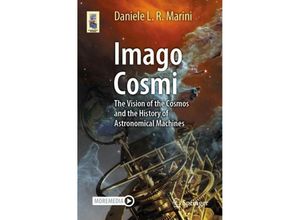This book takes the reader on an exploration of the Cosmos from Mesopotamia and Egypt to China
it unveils the fascinating development of astronomy and mathematics. After an overview of the
origins of these subjects highlighting the contributions of Greek astronomers the Arab
culture and Copernicus' solar system model the book delves into the revolutionary work of
Tycho Brahe Johannes Kepler Galileo Galilei and Isaac Newton leading to a comprehensive
understanding of the solar system. Special attention is given to the instruments used by
ancient astronomers including the most important astronomical clocks and planetary machines.
In light of this the author examines Kepler's almost unknown design of a planetary machine and
offers an interpretation using virtual reality techniques. The book also highlights the Chinese
view of the Cosmos and the evolution of its astronomy and astronomical machines offering
readers a unique perspective and insight intothe relationship between astronomy and technology
in different cultures. Finally the author provides a practical approach to understanding the
construction and mechanics of astronomical machines exploring the process of designing and
manufacturing a Tellurium. The reading is enriched with short videos of the Tellurium along
with a translation of the description of the planetary machine by Christiaan Huygens. In
addition it provides a unique glimpse into the religious influences on astronomical studies
during the mid-1700s through the translation of Johann Albrecht Bengel's book Cyclus.This book
is a must-read for anyone interested in the history of science and technology. It appeals to
astronomers mathematicians physicists and historians of science and technology alike
providing fascinating descriptions and insightful analysis of the vision of the Cosmos from its
earliest conceptions to the present day.

